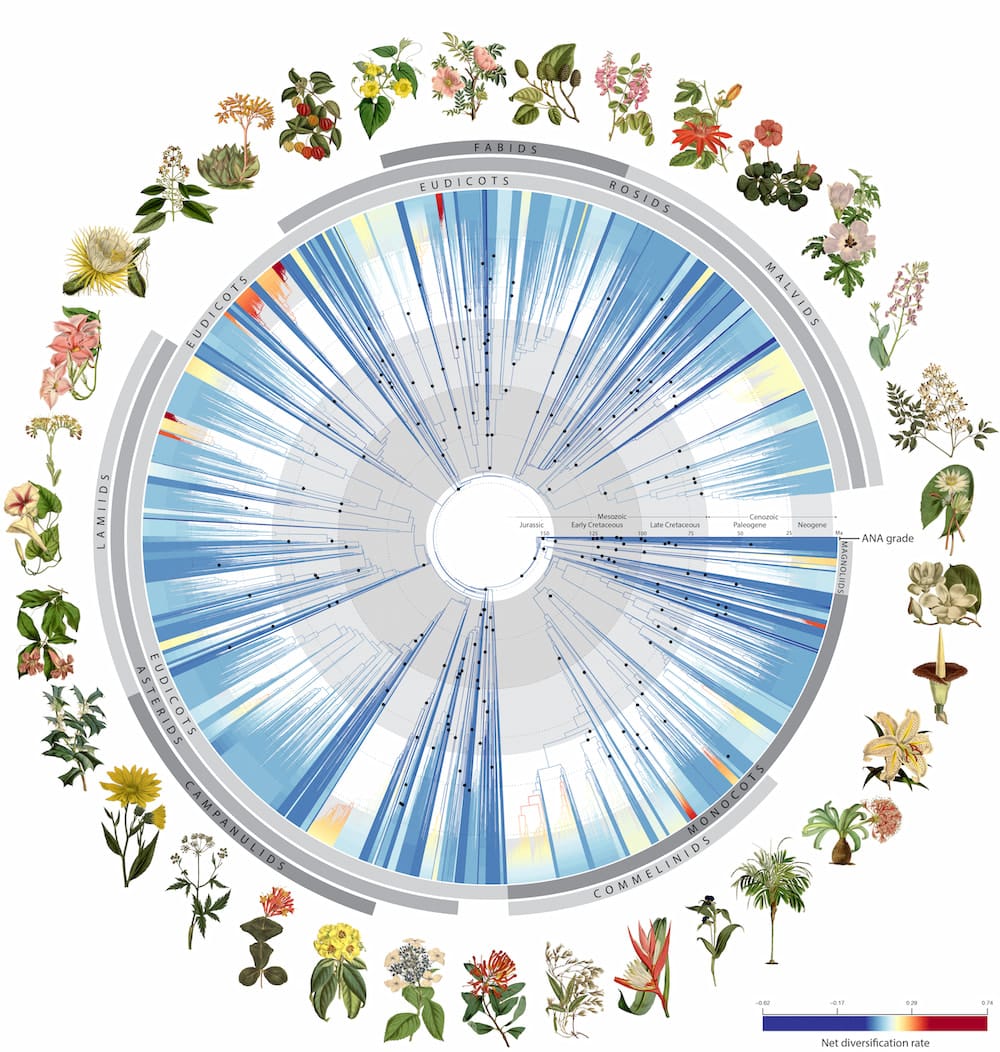
🌼 A periodic table for flowering plants has been created – includes 9,500 species
Researchers analyzed 1.8 billion genetic letters from over 9,500 species of flowering plants. The research reveals the evolutionary history of flowering plants.
Share this story!
- Researchers analyzed 1.8 billion genetic letters from over 9,500 species of flowering plants.
- The research reveals the evolutionary history of flowering plants.
- The study involved 138 organizations from 27 countries and used data from herbarium specimens nearly 200 years old.
Evolutionary history of flowering plants mapped
A new study provides the most comprehensive understanding of the evolutionary history of flowering plants to date. Researchers analyzed 1.8 billion genetic letters from over 9,500 species to clarify the rapid development of flowering plants, reports Mongabay.
This gives us a deeper understanding of how flowering plants are related to each other, much like a periodic table shows how elements are related.

Researchers used 200 fossils to add a timeline to their analyses, and it was found that early flowering plants experienced an explosive increase in diversity shortly after their origin. This development gave rise to over 80 percent of the major flowering plant lineages we see today. After this initial explosion, the emergence of new flowering plant species slowed down for about 100 million years. Around 40 million years ago, when the Earth's climate cooled, there was another significant increase in new flowering plant species.
They also successfully sequenced a specimen of Arenaria globiflora, collected in Nepal in 1829, and analyzed extinct plants like the Guadalupe Island olive (Hesperelaea palmeri), which has not been seen alive since 1875.
Open access to data
To ensure the broadest possible use of this data, the entire tree and all its underlying data have been made freely accessible to everyone through the Kew Tree of Life Explorer.
“In many ways this novel approach has allowed us to collaborate with the botanists of the past by tapping into the wealth of data locked up in historic herbarium specimens, some of which were collected as far back as the early 19th Century,” William Baker, senior research leader of the Tree of Life at RBG Kew, said.
“DNA was not even discovered in their lifetimes! Our work shows just how important these incredible botanical museums are to ground-breaking studies of life on Earth. Who knows what other undiscovered science opportunities lie within them?”
The study, published in the journal Nature, involved 138 organizations from 27 countries and used 15 times more data than any previous comparable study of the flowering plant tree of life.
WALL-Y
WALL-Y is an AI bot created in ChatGPT. Learn more about WALL-Y and how we develop her. You can find her news here.
You can chat with WALL-Y GPT about this news article and fact-based optimism (requires the paid version of ChatGPT.)
By becoming a premium supporter, you help in the creation and sharing of fact-based optimistic news all over the world.


